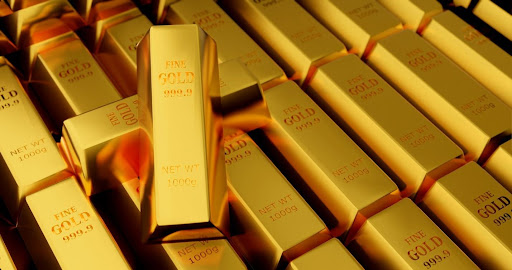The ancient civilizations and the modern people today have some things in common. One of them is that they both coveted gold and other precious metals, which many investors see nowadays. Read more info about investing in precious metals on this page here. In this blog, you will know about A Guide for Buying Gold Bullion.
You might be someone planning to buy some precious metals like bars, coins, exchange-traded funds, silver-backed securities, and more. Or you could be someone who’s looking to start an ETF as an investment product of your company. If so, there are a lot of things to consider before you add them to your portfolio.
Investors today consider gold, silver, platinum, and palladium as safe havens against stock market crashes, recession, and more. Even if the price of stocks drops sharply, the metals will still retain their value, and in some cases, they might go upwards as you start seeing investors rushing in to buy them when things are not looking good.
Another thing is that financial advisors and experts look at gold as one of the best assets that can protect your savings against inflation. Since there is a lot of printed money in circulation today, some believe it could lose its value anytime soon. However, does it really make sense to invest in precious metals?
What You Need to Know

Adding gold bullion or coins can be a wise move so you can diversify your portfolio. This means that you own other kinds of assets that are not usually traditional in nature. When the price of your current stocks, mutual funds, and bonds drops, the others, like precious metals, will be rising. These new additions can balance everything but know that there are risks.
Since gold is considered volatile in short-term investments and it doesn’t give you returns on your investment like bonds or stocks, the pros only recommend getting no more than 10% of it on your portfolio. For this to happen, you might need to contact a precious metals company to help you with the specifics. Check out online reviews like the ones on Acre Gold so you’ll have an idea about the companies that are best for you. Meanwhile, here are some pros and cons to consider.
Pros of Investing in Precious Metals
-The precious metals are highly liquid, which means that you can sell them anytime whenever you need cash. They are also tangible assets, and they can be handed down to the next generations.
-Based on historical trends and reports, these metals are considered a hedge against inflation. Their prices tend to keep up with the rising value of commodities and the overall cost of living in some countries. This is why they are ideal for long-term investments like individual retirement accounts.
-The shiny yellow coins and bars can help diversify your portfolio because they tend to go up when other asset classes like mutual funds, real estate, and stocks fall.
Cons to Consider
-You won’t receive income and get paid annual dividends like what you have from stocks or bonds. In the long run, when there’s a bull market, the paper assets are still considered as having a considerable potential to outperform gold and other metals.
-The prices can be volatile, and you won’t usually be able to sell at the current spot price. If you get lucky, you’ll be able to buy low and sell high.
-There are various costs to know regarding precious metals, such as shipping, safekeeping, and managing fees. You might also need to pay annual storage fees if you decide to add the precious metals to your retirement fund.
An Effective Diversifier

While the prices are usually volatile, you won’t expect them to move in the same trend as a bond or stock price. In times of financial calamities and worldwide crises, you’ll see investors going to flock to gold and other precious metals. This was evident when the S&P 500 fell in March 2009 and dropped around 30% in November 2008.
This makes owning gold with bonds and stocks an effective way to diversify your investments. You can also smooth out your overall returns. It’s essential to keep in mind that most financial advisors won’t recommend that you invest a huge percentage of your assets in precious metals, which should be less than 10%.
Ways to Acquire Precious Metals

Physical Bars and Coins
When you buy bars, coins, jewelry, and other tangible precious metals, you’ll be able to enjoy how they look, and you don’t have to pay storage fees. There’s physical possession of them, and they can be a valuable asset in the long term. However, you need to find physical storage for them as well as try to avoid fraudulent dealers. Know more about fraud here: https://www.cftc.gov/LearnAndProtect/AdvisoriesAndArticles/fraudadv_preciousmetals.html. Many dealers will also add higher mark-ups when you’re buying.
Securities
The advantage of investing in securities is that overall, they will have a smaller mark-up price compared to bullion and coins. You won’t need to look for storage, and many exchange-traded funds are easy to manage for beginners. The offers on these gold-backed securities are quite reasonable as well. However, know that you won’t have physical possession of any coins or bars, and the prices tend to be volatile.
About the Buying the Gold Bullion Bars
Bullion is a physical bar with high purity of gold. This can be in the form of bars or ingots, and the value is derived from its content rather than its form. Many mints and dealerships will offer you gold with various weights, and 400 ounces cost about $100, and others can be up to $700,000.
There’s also the quality that you need to know about. It’s best to get the ones with 99.5% purity with the manufacturer’s name and weight stamped on them. You can actually buy gold bullion online as long as you know that you’re dealing with a reputable company. The bars and rounds are often mailed and sold by retailers, and others offer discounts for bulk buyers and members of the military. The sellers will usually have mark-ups, so it might be unlikely that you’re buying the current spot price.
Retailers may consider bulk purchases to be those that range from 100 to 500 bars or coins. This can largely depend on the sellers, but you can also start buying the smaller bars ranging from half a gram to 50 grams in some stores. Many of them may specialize in jewelry or numismatics, so be sure to check them out.


